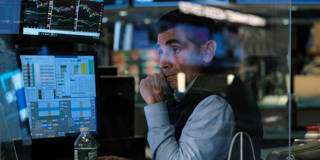Although past performance is never a guarantee of future results, it remains the case that stock-market valuations tend to outstrip bonds most of the time. Still, arriving at the best investment strategy is about more than simply doing the math; it also requires an appreciation of history and tail risks.
BERKELEY – Suppose that you had invested your wealth in a broadly diversified set of stocks, starting in January 1871, with the dividends being rolled back into your portfolio, and with your portfolio being rebalanced every January to maintain diversification. If you had also paid no taxes and incurred no fees, you would have had 65,004 times your initial investment, as of this past January. By contrast, if you had performed the same experiment with long-term US Treasury bonds, you would have only 41 times your initial wealth. That is the difference between an average annual inflation-adjusted return of 7.3% for stocks and 2.5% for bonds – 4.8 points per year, or what Rajnish Mehra and Edward C. Prescott called the “equity premium puzzle.”
Of course, neither of these strategies is possible in real life, since one also must pay commissions and deal with the price pressures of rebalancing one’s portfolio by selling winners and buying losers. Taxes, too, would take a big cut. They would be levied on your interest income from bonds, on your realized capital gains from stocks, and – back when stock buybacks were highly disfavored – on the dividends that you received. Together, these costs would reduce your real return by perhaps one-third, leaving an equity premium for stocks of around 3.2 percentage points per year. That means a stock-market investor could make twice as much as the bond-market investor in 22 years, on average.
Before Edgar L. Smith published Common Stocks as Long-Term Investments in the 1920s, this basic fact about stock and bond investors was not widely known. Most people considered stocks highly “speculative,” because they focused more on the returns from individual stocks and on the high likelihood that any given corporation would fail to maintain its position in the marketplace over time. Betting on individual stocks was best left to gamblers, insiders with special information, or those who truly believed they had special insights into the business cycle. But most retail stock-pickers suffer from the Dunning-Kruger effect (thinking that you are smarter than you really are), which is why their losses have long powered the gains of successful professional equity traders.

BERKELEY – Suppose that you had invested your wealth in a broadly diversified set of stocks, starting in January 1871, with the dividends being rolled back into your portfolio, and with your portfolio being rebalanced every January to maintain diversification. If you had also paid no taxes and incurred no fees, you would have had 65,004 times your initial investment, as of this past January. By contrast, if you had performed the same experiment with long-term US Treasury bonds, you would have only 41 times your initial wealth. That is the difference between an average annual inflation-adjusted return of 7.3% for stocks and 2.5% for bonds – 4.8 points per year, or what Rajnish Mehra and Edward C. Prescott called the “equity premium puzzle.”
Of course, neither of these strategies is possible in real life, since one also must pay commissions and deal with the price pressures of rebalancing one’s portfolio by selling winners and buying losers. Taxes, too, would take a big cut. They would be levied on your interest income from bonds, on your realized capital gains from stocks, and – back when stock buybacks were highly disfavored – on the dividends that you received. Together, these costs would reduce your real return by perhaps one-third, leaving an equity premium for stocks of around 3.2 percentage points per year. That means a stock-market investor could make twice as much as the bond-market investor in 22 years, on average.
Before Edgar L. Smith published Common Stocks as Long-Term Investments in the 1920s, this basic fact about stock and bond investors was not widely known. Most people considered stocks highly “speculative,” because they focused more on the returns from individual stocks and on the high likelihood that any given corporation would fail to maintain its position in the marketplace over time. Betting on individual stocks was best left to gamblers, insiders with special information, or those who truly believed they had special insights into the business cycle. But most retail stock-pickers suffer from the Dunning-Kruger effect (thinking that you are smarter than you really are), which is why their losses have long powered the gains of successful professional equity traders.